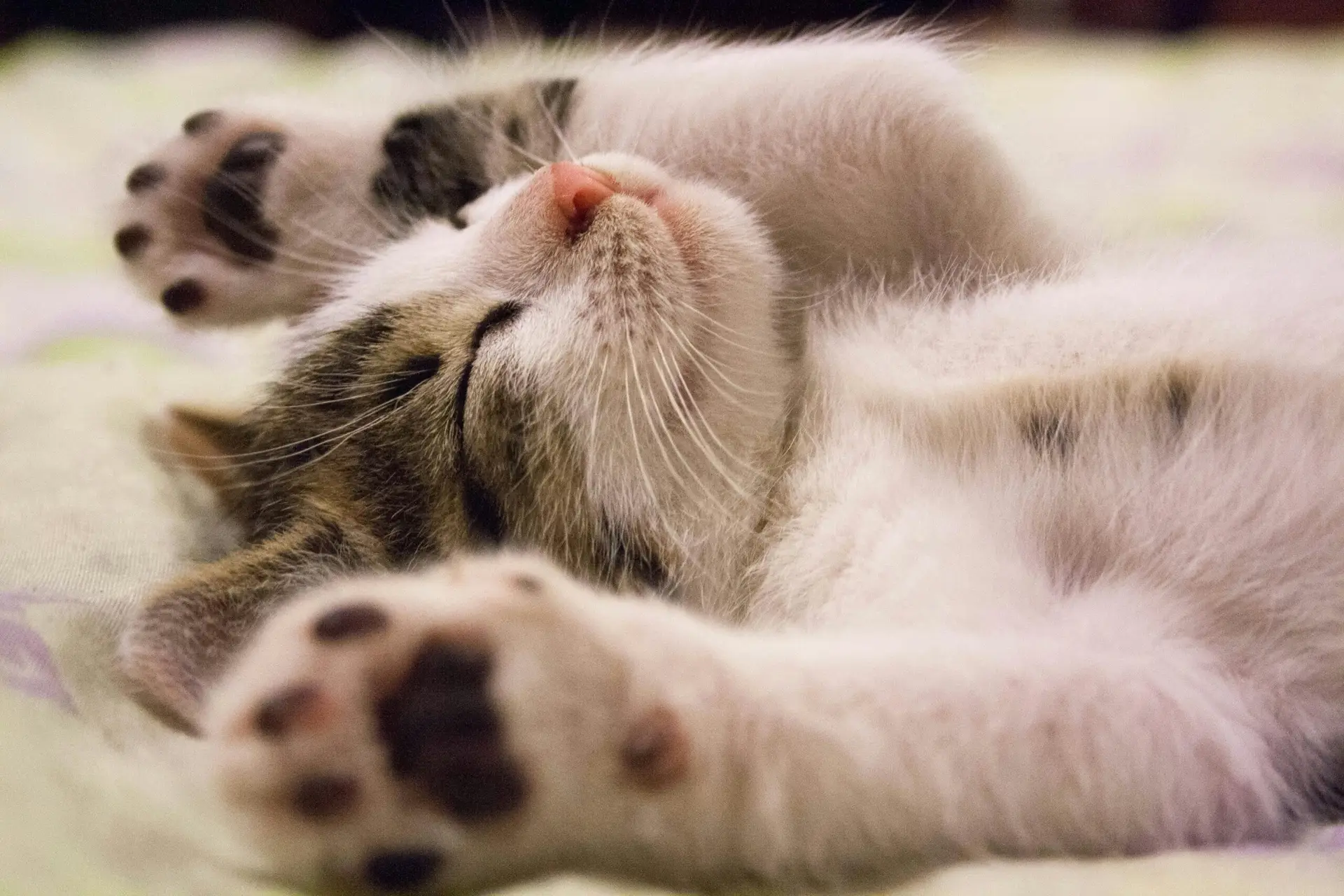Felines have 5 stages of catnip addiction and we’re going to discuss all of them. First, we’re going to ask ourselves, “what’s the fascination with catnip?” Afterall, the adventure certainly enlightens and entertains cat owners. But what is the deal? Also, one has to wonder if it’s a safe experience for your pets. So, let’s take a deep diver into the world of catnip. We’ll discover how to harmonize your cat’s penchant for this herb with everyday life. We’ll delve into the 5 Stages of Catnip Addiction: curiosity, engagement, over-stimulation, cooling-off, and returning to normalcy. This journey promises to deepen your understanding and enhance your cat’s well-being.
Introduction to Catnip: The Feline Elixir
Catnip, or Nepeta cataria, casts a spell on our feline friends. Its active ingredient, nepetalactone, belongs to the mint family. Nepetalactone acts as a natural stimulant for cats, eliciting behaviors such as rolling, rubbing, and playful activity. The reason behind this attraction lies in how nepetalactone interacts with a cat’s olfactory system. When cats smell nepetalactone, it binds to receptors in the cat’s nasal tissue, which then stimulates sensory neurons that project to various regions of the brain, particularly the amygdala and the hypothalamus. These brain regions are associated with emotion, pleasure, and certain behavioral responses. The reaction to nepetalactone varies among individual cats, but for many, it triggers a euphoric response often characterized by playfulness and excitement.
It’s important to note that not all cats are affected by nepetalactone, as sensitivity to catnip is hereditary and not all cats inherit the genes that make them responsive to it. Additionally, the response to catnip tends to diminish with repeated exposure and may not occur at all in very young kittens or elderly cats.
In short, catnip is more than a treat; it’s a window into the playful and mysterious nature of cats. Its effects vary due to genetic predisposition. Some cats may experience euphoria, while others might remain indifferent. This variability makes catnip intriguing. For affected cats, catnip can act as a stimulant or a relaxant.
Safety First: A Vet’s Assurance
In cat care, safety always comes first. Catnip is safe and non-toxic for cats. The veterinary community endorses it. When used responsibly, catnip can enhance playtime, encourage exercise, and help with training. However, watch for signs of digestive upset or behavior changes. Moderation is key. Consulting with your vet can provide tailored advice for your pet.
Stage 1: Discovery and Initial Fascination
The initial encounter with catnip often starts with curiosity. This stage serves as an introduction. Cats assess and explore the herb’s intriguing scent and texture. This curiosity can quickly turn into fascination. The effects of nepetalactone begin to manifest. It’s a moment of pure discovery. Each cat’s unique personality shines through. Some may approach with caution, while others dive in with abandon. This stage offers a glimpse into your cat’s innate tendencies and preferences.
Observing Your Cat’s Reaction
Observation is key during this initial stage. It allows you to gauge your cat’s interest and reaction to catnip. It also provides an opportunity to bond with your pet. Watching how they interact with catnip can be entertaining. This stage is the perfect time to note what form of catnip your cat prefers. This sets the stage for future enjoyable and engaging catnip sessions.
Stage 2: Full Engagement and Euphoria
As cats become more accustomed to catnip, they often reach a stage of utter bliss. This euphoric reaction is what many cat owners anticipate and enjoy. During this time, cats may show a range of behaviors from intense playfulness to serene relaxation. This variance highlights the individualized response cats have to catnip. The sight of a cat fully engaged with catnip is a testament to the herb’s potent effects.
The Importance of Controlled Exposure
Managing exposure to catnip is crucial during this stage. It ensures that each experience remains special. It also prevents your cat from becoming desensitized to its effects. Setting boundaries and establishing a routine for catnip sessions can help maintain its allure. This controlled approach keeps catnip as a valuable tool for engagement. It also helps manage your cat’s overall well-being and happiness.
Stage 3: Overstimulation and Disinterest
It’s not uncommon for cats to reach a point of overstimulation with catnip. This might manifest as a sudden disinterest or even mild agitation towards the herb. Recognizing this shift is important. It signals that your cat needs a break. This stage underscores the importance of moderation. It highlights that too much of a good thing can be overwhelming, even for cats. It’s a natural part of their interaction with catnip.
Recognizing the Signs
Understanding your cat’s body language and signals is crucial during this stage. It ensures that catnip remains a positive experience. If your cat walks away or seems less interested, it’s time to put the catnip away. This respect for their boundaries fosters a healthy relationship with catnip. It ensures it continues to be a source of joy rather than stress.
Stage 4: The Cooling-off Period
Following an active session with catnip, cats usually enter a phase of relaxation. This cooling-off period is a time for self-care. Cats groom themselves and settle down. It’s a natural progression from high-energy engagement with catnip to a state of calm. Providing a quiet, comfortable space for your cat during this time can enhance their sense of security and well-being.
Providing a Comfortable Environment
A peaceful environment supports your cat’s transition from excitement to rest. This might include a favorite blanket, a cozy bed, or a preferred spot by a window. Such an environment caters to their need for comfort. It also reinforces your home as a safe and nurturing space.
Stage 5: The Return to Normalcy
After the effects of catnip have worn off, cats return to their regular behavior. This return to normalcy is a testament to the temporary nature of catnip’s effects. It’s also an opportunity for owners to engage with their cats in other activities. This stage highlights the balance between catnip sessions and broader aspects of pet care and interaction.
Reflection and Routine
Reflecting on experiences with catnip and establishing a routine can enhance your cat’s life. It’s about finding a balance that works for both of you. This ensures that catnip remains a tool for enrichment rather than a routine expectation. This mindful approach to catnip use can help foster a deeper bond with your pet.
Navigating Catnip Sensitivities
While most cats enjoy catnip, some may have a more sensitive reaction to it. This section emphasizes the importance of starting with small amounts. Monitoring your cat’s reaction can prevent any potential negative effects. For cats with a sensitive disposition, less intense alternatives might be more suitable.
The Social Aspect of Catnip
Catnip doesn’t just affect individual cats; it can also influence social dynamics. Observing how your cats interact with each other during catnip sessions can offer insights. This section explores how catnip can be used to foster social interaction among cats. Conversely, it might be best to offer catnip to cats separately to avoid conflicts.
Environmental Enrichment with Catnip
Beyond direct interaction with catnip, this herb can enhance your cat’s environment. From catnip-infused toys to scratching posts and interactive puzzles, incorporating catnip can provide ongoing stimulation. This section provides ideas for integrating catnip into your cat’s routine. It promotes exploration and discovery, keeping their environment engaging and enriching.
Conclusion: A Journey of Discovery and Joy
Understanding the stages of catnip influence and integrating new insights can transform this herb into a valuable enrichment tool. By respecting your cat’s reactions and moderating exposure, you can ensure that catnip remains a source of joy and discovery. Embrace the unique journey that catnip offers. Foster a deeper understanding and bond with your beloved cat.



